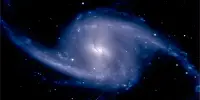A number of things have captured the imagination of people throughout the ages like the moon captured it is inspired by great romance, thriller works of literature and film, and at least one pizza pie-centered love song. But perhaps bigger than that, our closest neighbors and the other half of our esteemed people have led all the people in history to stare at the night sky and think: “I bet there’s something really great about it.” Luckily for us, some of them decided to write it down.
The moon of antiquity had it lightly, a kind of adulteration. Around 75, the historian and philosopher Plutarch wrote an article in the Orb Luna Appar (“about the face in lunar orbit”), describing it as the abode of the spirits of the dead. In particular, the spirits of the dead wear fancy hats and shine like vampires in a teen romance. “All souls, whether or not they have a mind, must travel between the earth and the moon when it is released from the body, but not for equal periods of time,” Plutarch explains, otherwise an admirable work of scientific analysis.
“Unjust and licensed people pay fines for their crimes; But the good spirits … like the victors crowned by feathers … [and] go in the presence of a ray of light.” The Renaissance was a strange time. On the one hand, we see the very first realistic representation of the knowledge of various cosmic events and the sophisticated observation of the moon. Dante, on the other hand, has spent two books worrying about whether the man on the moon was actually Khan, the “first murderer” in Christian mythology.
But it is not just the main character of the Bible that people thought could meet the moon travelers. Ludovico Ariosto’s epic Orlando Furioso (Raging Roland for viewers’ anglophones) gave John the title of “Matthew, Mark, Luke, and John” on the moon, while the seventeenth-century novel the Man in the Mueen; Or, a discourse on a voyage there describes the inhabitants of the moon as tall, “lunar” characters who feel no hatred, love Jesus, and enjoy a couple of cigarettes.















